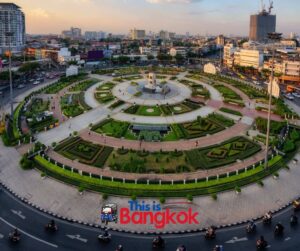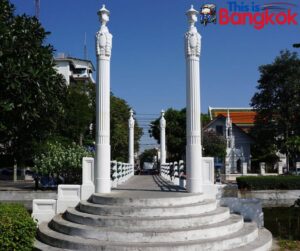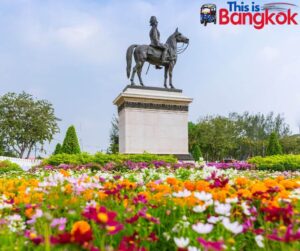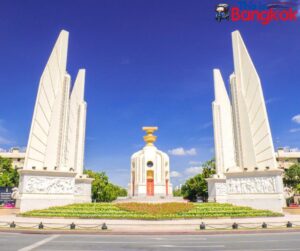Victory Monument
The Victory Monument is a prominent landmark located in the heart of Bangkok, the capital city of Thailand.
It is one of the city’s most iconic and recognizable monuments, symbolizing Thailand’s military history and role in various conflicts.
Location
The Victory Monument is situated at the intersection of Phahon Yothin Road, Ratchawithi Road, and Phaya Thai Road in the Ratchathewi District of Bangkok.
History
The monument was constructed in 1941 during the reign of King Rama VIII to commemorate Thailand’s victory in the Franco-Thai War, which took place in 1940-1941.
Architectural Style
The Victory Monument features a distinct obelisk design, with four wing-like structures from its base, reflecting a mix of Art Deco and Thai architectural influences.
Symbolism
While initially built to commemorate a military victory, the monument has come to symbolize broader themes such as national pride and independence.
Accessibility
Due to its central location, the Victory Monument is easily accessible by public and private transportation.
Surroundings
The area around the Victory Monument is bustling with activity, featuring a mix of street food stalls, shops, and restaurants.
Commemorative Events
The monument is often a focal point for various events and celebrations, including military parades, political rallies, and cultural festivals.
Public Square
The open space around the monument serves as a public square where people gather for various purposes, from casual meetings to organized gatherings.
The Victory Monument is a historical landmark and a dynamic and vibrant part of modern Bangkok.
Its central location and rich history make it a significant point of interest for visitors and a symbol of Thailand’s past and present.
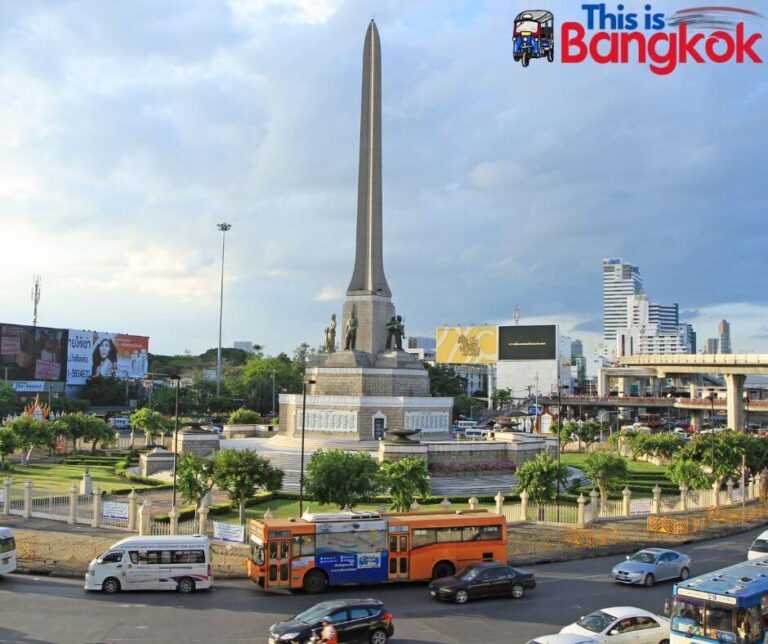
| Location | The intersection of Phahon Yothin Road, Ratchawithi Road, and Phaya Thai Road, Ratchathewi District |
|---|---|
| History | Commemorates Thailand’s victory in the Franco-Thai War (1940-1941) |
| Architectural Style | Distinct obelisk design with Art Deco and Thai architectural influences |
| Symbolism | Represents national pride and independence in addition to military victory |
| Accessibility | Easily accessible by public and private transportation |
| Surroundings | Bustling area with street food stalls, shops, and restaurants |
| Commemorative Events | The focal point for military parades, political rallies, and cultural festivals |
| Public Square | Open space for gatherings and meetings |
What is the story behind the Victory Monument in Bangkok?
The Victory Monument was built to commemorate Thailand’s victory in the Franco-Thai War in 1940-1941.
What is the history of the Victory Monument?
The monument was constructed in 1941 during the reign of King Rama VIII to mark Thailand’s victory in the aforementioned war.
Who built the Victory Monument?
The monument was built by the Italian sculptor Corrado Feroci under the orders of the Thai government during King Rama VIII’s reign.

